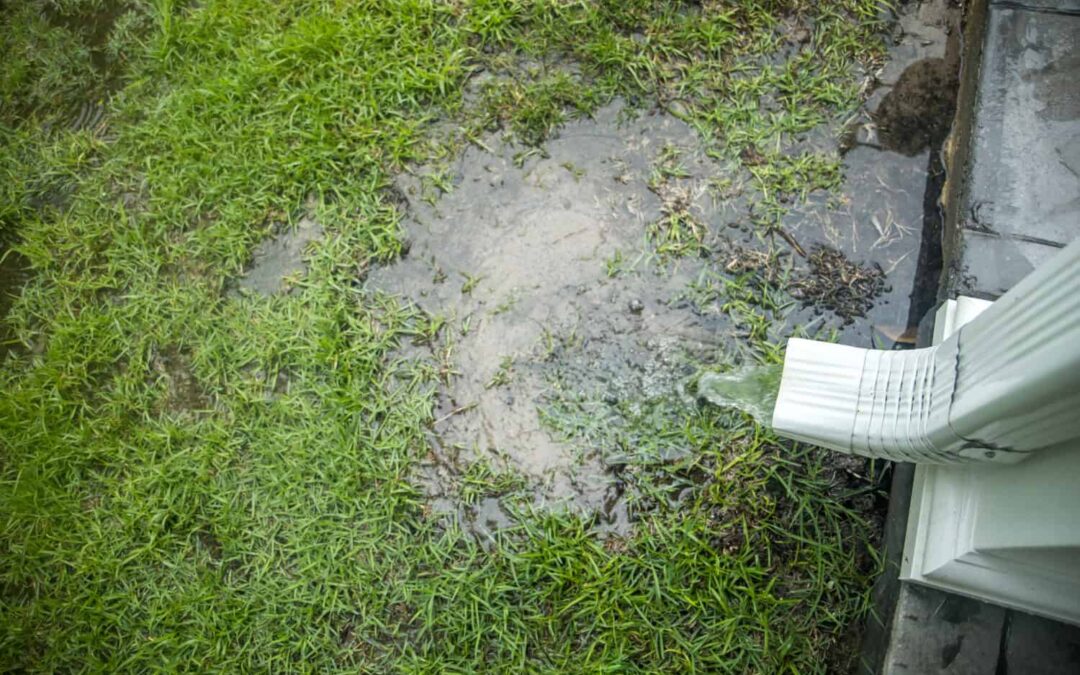Ensure A Positive Slope Away from the Structure
The grounds around structures should be sloped away from the foundation so that water is directed away from the foundation during heavy rains. This is often called a positive slope and it can reduce risks of water leakage at the interior or settling of the foundation. A slight slope is often adequate to get water away from the foundation but sometimes this positive slope is difficult to achieve on hilly sites or tightly landscaped areas. Negative grading is a common shortcoming on older buildings where proper site work was neglected during the original build. Ensuring a positive slope away from the structure is one of the best ways to prevent moisture control problems around a building.
Use Swales where Needed to Promote Drainage Away from the Property
Where the grade of the site is not easily conducive to a positive slope away from the building, swales can provide a solution. A swale is simply a low point between the structure and a negative slope.
Ensure Sub-Surface Drains Are Unobstructed
During heavy rains, go outside and see how your drainage system is performing. Water backing up out of sub-surface drains indicates repairs are needed to control roof runoff. Thousands of gallons of water can come off of a roof during heavy rains, this water must be diverted away from the structure.
Use Reliable Extensions where Downspouts Discharge Near the Foundation
Small splash blocks such as the one shown above are often unreliable and inadequate during heavy rains. This can lead to basement or crawl space moisture control problems or even structural settlement. Remember, wet soils do not bear weight well. Where above-ground drains will suffice, consider using an inexpensive corrugated black plastic pipe to direct water away from the foundation. When burying drainage pipes, more reliable solid PVC piping is recommended as this piping is less likely to get crushed by the weight of the soil and if it clogs it can usually be cleaned out.
Eliminate Earth To Wood Contact
Care should be taken to keep mulch, earth, and gravel at least 6″ from the bottom course of exterior siding and trim. Earth-to-wood contact is the easiest way for insects to enter the structure, and keeping a minimum 6″ gap will eliminate conditions conducive to wood-destroying organisms. Where soil is in contact with the siding or trim, the dirt, gravel, or debris should be pulled away from the building so that the wood is clear of contact and unencumbered.
Central Carolina Carolina Inspections offers home inspection services, including radon testing, to customers in Central North Carolina. Contact us to schedule an appointment.


Recent Comments